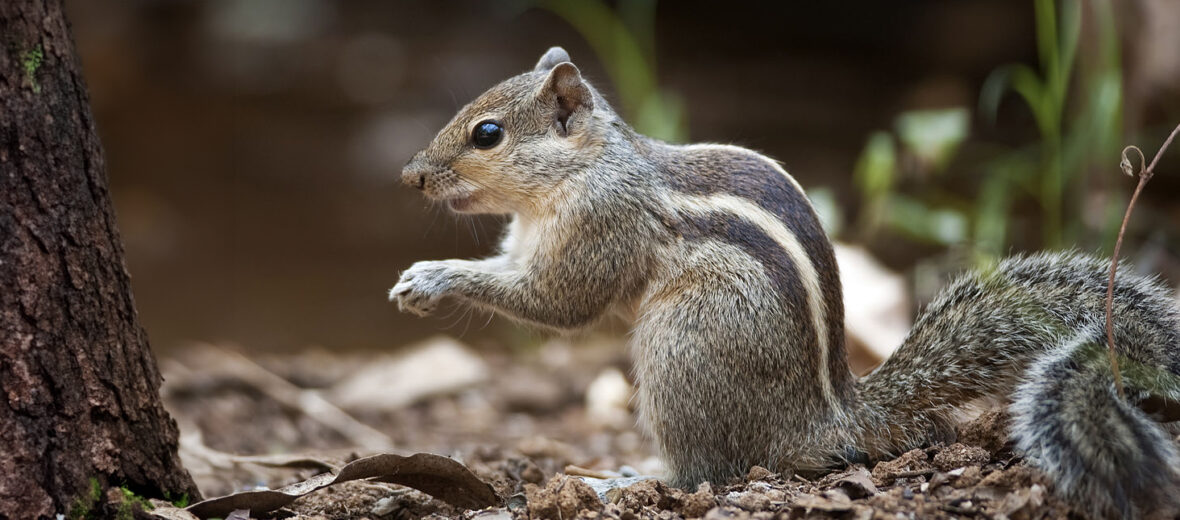
The Indian palm squirrel, aka 3-striped palm squirrel, hails from India and Sri Lanka. They tolerate a variety of habitats, such as grasslands, mangrove forests, rainforests, scrublands, tropical dry forests, gardens, parks, and urban areas. With no real natural threats and an increasing population, these critters are listed as Least Concern by the IUCN.
First the Stats…
Scientific name: Funambulus palmarum
Weight: Up to 4 ounces
Length: Up to 15.75 inches, plus up to a 4.72 inch tail
Lifespan: Up to 5.5 years
Now on to the Facts!
1.) During the late 19th century, these squirrels were introduced to Australia, Comoro Islands, Madagascar, Mayotte, Mauritius, Réunion, and Seychelles. In these locales they are considered a nuisance species.
2.) These critters are solitary and only come together to mate.
3.) Their communication consists of body language and vocal calls that sound like “chip chip chip”.
4.) Like so many other squirrels they are diurnal (active during the day).
5.) Being defensive of their cache of food, they can become aggressive towards anything that tries to encroach on their food supply.
But wait, there’s more on the Indian palm squirrel!
6.) Due to the warm climate in which they live, these squirrels do not hibernate.
7.) They can also be tamed quickly to accept food from humans.
Did you know…?
These squirrels can run at speeds of up to 10 mph.
8.) A group of squirrels is called a colony, dray, or surry.
9.) While primarily feeding on various nuts, seeds, and fruits, they will also feast on insects, smaller mammals, reptiles, baby birds, and bird eggs.
10.) Females undergo up to a 35 day gestation (pregnancy) that yields up to 3 kittens (babies).
But wait, there’s still more on the Indian palm squirrel!
11.) Kittens are weaned in up to 10 weeks.
12.) Young Indian palm squirrels become sexually mature at up to 9 months of age.
13.) Hindus view squirrels as sacred and frown upon them being harmed.
14.) The 5-striped palm squirrel, from northern India, is their closest relative.
15.) Snakes, wildcats, hawks, and owls all prey on these little critters.
Now a Short Indian Palm Squirrel Video!
Be sure to share & comment below! Also, check out the Critter Science YouTube channel. Videos added regularly!
Want to suggest a critter for me to write about? Let me know here.
Some source material acquired from: Wikipedia & IUCN
Photo credit: Yathin S. Krishnappa



